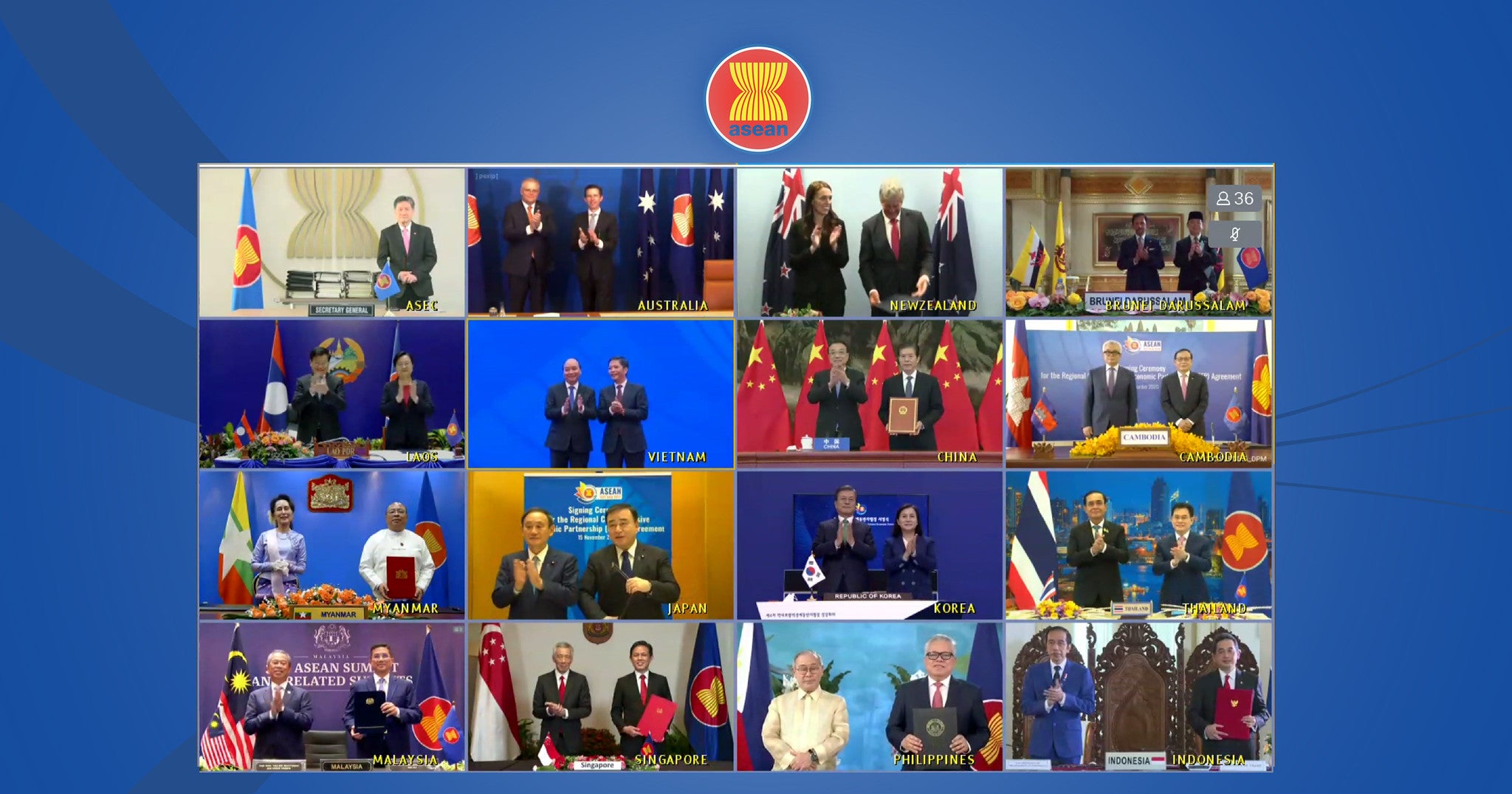Mohammad Masudur Rahman

South Asian countries like Bangladesh can benefit from free trade agreements such as the Regional Comprehensive Economic Partnership. Being the world’s second biggest apparel exporting country, Bangladesh has a huge skilled labour force to offer to the global market. Such agreements with important trading partners will not only ensure market access for both goods and services for the South Asian countries but also reflect transparency and accountability in the effort to attract foreign direct investment.
The Regional Comprehensive Economic Partnership (RCEP) is the biggest trade deal in history. This regional block, comprising the 10-member states of the Association of Southeast Asian Nations (ASEAN), China, Japan, South Korea, Australia and New Zealand, accounts for not only one-third of the global economy – about US$26 trillion (S$34.7 trillion) of global output – but also one-third of the world’s young middle-income population – a market of 2.2 billion people.
It is argued that the RCEP will enable China to become the world’s largest economy in the future. Peter Petri of the Peterson Institute for International Economics and Michael Plummer of Johns Hopkins University estimate the economic impact of the RCEP and conclude that real incomes are expected to increase by about one per cent in Japan, South Korea and China. The Chinese economy has already bounced back to its pre-pandemic position according to latest data published by the China Statistical Bureau. The RCEP will further help it to remain on the right track of trade growth. Most empirical studies show that China, Japan, Korea, Vietnam will benefit enormously from the deal. Several other countries have already demonstrated their interest in wanting to join the RCEP. These include Canada and Hong Kong.
It is very unlikely that India will join the RCEP in the foreseeable future. The South Asian countries must learn the development process from the experiences of the East Asian economies and capitalise on the benefit of regional integration.
Trade creation and diversion is a common phenomenon of any free trade agreement (FTA). Trade will naturally be diverted to less efficient regional blocks due to tariff elimination, liberal rules of origin and the easing of other non-tariff measures. Vietnam, Cambodia and Malaysia will export more to the region while China, Japan and Korea will be in a better position to integrate their supply chains. Cambodia, Laos and Myanmar – all least developed countries (LDCs) – will be able to strengthen their competitive positions in the region. The simplified rules of origin and less non-tariff measures (NTMs) will help to improve the regional supply chains. The United States has withdrawn the Generalized System of Preference (GSP) facilities for everything but arms (EBA) imported from Cambodia. This is an excellent opportunity for Phnom Penh to recover from this loss by exporting to the other countries under the RCEP.
The South Asian countries will find it tougher to export to Japan, Australia, China and the ASEAN markets due to the erosion of preference. Although China has offered duty-free access to imports from Bangladesh at the 97-per cent tariff line, these products will face various NTMs and tougher rules of origin conditions. Meanwhile, Bangladesh’s competitors such as Vietnam and Cambodia are in a much more advantageous position in exporting to China due to the liberal tariff terms, rules of origin and other NTMs.
An FTA not only removes trade barriers but also builds greater confidence and transparency among the partner states. Foreign investment into all the small and less developed economies will increase under the RCEP. The ASEAN plus five states have already reduced tariffs but the RCEP provides the additional notion that the combined region is a great place for trade and investment with a higher level of transparency and accountability, and lower tariffs and NTMs. This will give enormous confidence to business communities to invest in the long term in the region. For example, Taiwan’s investment in Vietnam was US$32 billion (S$42.7 billion) in 2020 compared to US$ 1.5 billion (S$2 billion) in India.
There is a strong growth of Chinese, Japanese and Korean investments into Hanoi and Yangon but not so in the case of Dhaka or New Delhi. According to Vietnam’s Ministry of Planning and Investment (MPI), 109 countries invested in Vietnam in 2020. Singapore led the list with total investments of US$7.51 billion (S$10.04 billion) in Vietnam while South Korea was the main investor in 2019 with US$7.5 billion (S$10.03 billion). Cambodia, Laos and Myanmar continued to attract active investment flows from intra-ASEAN sources and other Asian economies, particularly China, Japan and South Korea.
South Asian LDCs like Bangladesh and Nepal will be graduating to the developing country status by 2024. Current preferential market access under the World Trade Organization’s duty-free quota-free or GSP facilities by the developed countries under the EBA will be eliminated in principle after the graduation. These countries must prepare themselves for this new post-graduate environment. Harmonising domestic regulations, transparency in tariff, subsidies and other non-tariff measures must be streamlined.
Joining any trade deal is a long process. The South Asian countries should initially aim to join regional trade agreements as observers. Bangladesh is a member of the Bay of Bengal Initiatives for Multi-Sectoral Technical and Economic Cooperation (BIMSTEC) and the Asia Pacific Trade Agreement (APTA). The BIMSTEC could be a great platform to access the region, as Thailand and Myanmar are members of this block. The APTA could be another route as China and South Korea are members of this group. Bangladesh could utilise these two regional blocks to ensure easier access to the East Asian markets and they could perhaps then push to join the RCEP in the future through the BIMSTEC and APTA channels.a
No comments:
Post a Comment